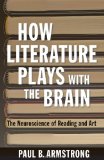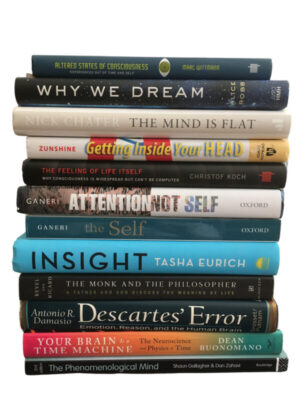new book – ‘How Literature Plays with the Brain: The Neuroscience of Reading and Art’ by Paul B. Armstrong
Written on September 20, 2013
How Literature Plays with the Brain: The Neuroscience of Reading and Art by Paul B. Armstrong (Johns Hopkins University Press, 2013)
Book description from the publisher:
“Literature matters,” says Paul B. Armstrong, “for what it reveals about human experience, and the very different perspective of neuroscience on how the brain works is part of that story.” In How Literature Plays with the Brain, Armstrong examines the parallels between certain features of literary experience and functions of the brain. His central argument is that literature plays with the brain through experiences of harmony and dissonance which set in motion oppositions that are fundamental to the neurobiology of mental functioning. These oppositions negotiate basic tensions in the operation of the brain between the drive for pattern, synthesis, and constancy and the need for flexibility, adaptability, and openness to change.
The challenge, Armstrong argues, is to account for the ability of readers to find incommensurable meanings in the same text, for example, or to take pleasure in art that is harmonious or dissonant, symmetrical or distorted, unified or discontinuous and disruptive.
How Literature Plays with the Brain is the first book to use the resources of neuroscience and phenomenology to analyze aesthetic experience. For the neuroscientific community, the study suggests that different areas of research—the neurobiology of vision and reading, the brain-body interactions underlying emotions—may be connected to a variety of aesthetic and literary phenomena. For critics and students of literature, the study engages fundamental questions within the humanities: What is aesthetic experience? What happens when we read a literary work? How does the interpretation of literature relate to other ways of knowing?
Google Books preview (scroll past blank page):
See also: Author’s webpage
Filed in: cognitive science,culture,fiction,new books.




[…] ?????????????????????????????????????????????????????? […]
> An infant couldn’t survive on its own, but an ape I’m not sure that is the case at It would depend on the conditions, at any Moreover, it is unclear why this would be a good standard for moral consideration- since we give that to paraplegics, for >It’s only for a while with infants: Once they reach a certain age they are free from their parent’s For the ape in the zoo it never However, Singer’s argument isn’t that the imprisonment is wrong because of its >We hold the ape for amusement or scientific We raise the infant for its own A case could be made that in many cases captivity is better than living the wild- for example if the animals environment has been destroyed, if it is sick, abandoned or I agree that animals should have some moral consideration, I disagree with the assessment that all captivity is